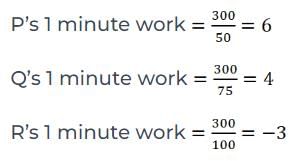Practice Test: Science Pedagogy - 2 - CTET & State TET MCQ
30 Questions MCQ Test - Practice Test: Science Pedagogy - 2
Which among the following is the best way to assess the child at the primary level?
Direction: Answer the following question by selecting the most appropriate option.
We use to perform which of the following to test a hypothesis?
A teacher begins the class by demonstrating the chemical test of starch in a given sample of food. The cognitive process associated with the underlined word in the above statement is
Look at the following teacher-student interaction and answer the question.
Teacher: Does the speed of the electric motor increase if the current is increased?
Student: Yes, if the current supplied is increased then the number of revolutions per minute (rpm) of the motor also increases.
The answer given by the student depicts which concept of nature of science?
Direction: Answer the following question by selecting the most appropriate option.
How can you assure that science plays an emancipative role in the world?
Direction: Answer the following question by selecting the correct / most appropriate options.
A Class VII teacher wraps a thin paper strip tightly around an iron rod and tries to burn the paper with candle while rotating the iron rod continuously. Does it burn? Which process skill/skills of students may be developed through this activity?
Select the most appropriate option to fill in blank No.4.
Direction: Answer the following question by selecting the most appropriate option.
In teaching of science, a good teaching and learning process can be said when__
Select the most appropriate option to fill in blank No.2.
Directions: Answer the following questions by selecting the most appropriate option.
A Science teacher should be learned in his subject because they can__
There are three taps P, Q, and R. P can fill the tank in 50 minutes, Q can fill the tank in 75 minutes and R can empty it in 100 minutes. P and Q are opened first and at every 3rd minute R is opened and P,Q are closed. Find the time taken by all the three pipes to fill the tank?
Direction: Answer the following questions by selecting the correct/most appropriate options.
Which one of the following should not be an aim of science education at upper primary level?
Direction: Answer the following questions by selecting the correct/most appropriate options.
Which one of the following statements is true about the ‘laws’ and ‘theories’ in science?
Direction: Answer the following question by selecting the most appropriate option.
In teaching of science, a good teaching and learning process can be said when__
Apart from the following science studies methods are….
While determining the density of a metal block using a spring balance and measuring cylinder, a student followed the following steps in his experiment.
A. noted the water level in the measuring cylinder without the metal block
B. immersed the metal block centrally in water without touching the sides and center of the bottom
C. noted the water level in the measuring cylinder with the metal block inside it
D. removed the metal block from the water and immediately weighed it using a spring balance
the incorrect step in the procedure is
Directions: Answer the following questions by selecting the most appropriate option.
Teaching of science for class 1 to 5, the curriculum follows the________






















